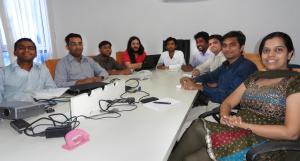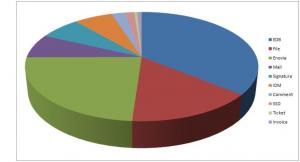The ten-millionth object
And the winner is ... François Sagot! By uploading the "RAMI Summary Report for the ITER Cryoplant" into the ITER Collaborative Platform (ICP), the ITER technical officer officially became the platform's ten-millionth customer.
"Ten million objects is a really impressive number," says web application officer Carlo Capuano. "An aircraft carrier is made up of about ten million parts ... and ten million is not the end of the ITER story!"
Less than three years ago, we reported on the one-millionth ICP object.
ICP is a one-stop shop for all data related to ITER, from Word documents stored on ITER's document management system IDM, to Catia data files used by the designers. Today, the biggest portion of stored data is associated with the Engineering Database which was launched in February. However with 100,000 accesses per day, IDM accounts for the largest traffic within ICP.
A certain number of well-established commercial tools provide strong support for the most important activities inside the ITER Organization. Whenever those tools do not provide needed functionality, however, the ICP platform can provide solutions quickly to manage any kind of data and workflow.
In the past five years more than 50 applications have been developed and are in use with the same user interface—available at any location in the world—thanks to the strict adherence to web interfaces. Applications cover engineering problems like magnet conductor production, for example, or action tracking.



